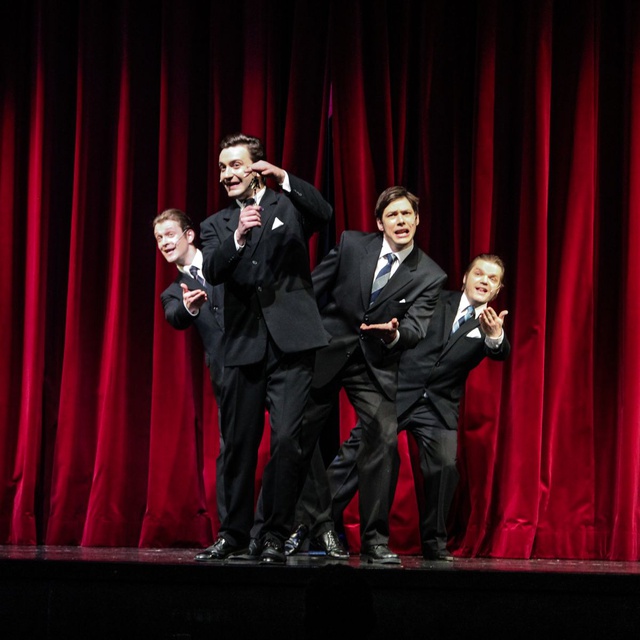
“Uno Bossa or the Seven Lives of Uno Loop” (Peep Pedmason) at Rakvere theater.
Director and scenographer: Hardi Volmer.
Movement director: Oleg Titov (Ugala Theater).
Costume designer: Kristel Maamägi.
Singing teacher: Kadri Kask.
„No-no, this is not how it happened!“ Uno Naissoo, played by Toomas Suuman, cries out from behind the curtain. And then he appears, coat wide open, at the most dramatic moment, apparently irritated that someone has interpreted Uno Loop’s biography wrong once again. The play „Uno Bossa or the Seven Lives of Uno Loop“ juggles skillfully with different possible versions of the life of the singer-guitar player-teacher. Somehow, all the digressions from reality end rather badly, as if trying to persuade us that in the real world everything happened like it had to and otherwise it would have been quite bad. The play makes me wonder: what is real after all? What do we know about Uno Loop? If someone asked me about him on the street, I would probably stare at him, speechless, trying to think of a nearest WiFi spot for a quick Google search on my phone. In fact, this was before. Now it seems that I know much more about Loop. Or does it only seem so? Truth be told, the distinguished national artist still maintains his secrecy. We don’t learn much about his personal life. At the beginning, women in period dresses fall to his feet and fight for the right to dance with him, but Uno seems to be in his own world. And in this world he has a wife and a child, who are not talked about much, maybe only mentioned. In some ways the play gives the impression that now I know much more about Uno Loop – for instance, that he was quite a talented boxer – but at the same time there is so much that is left uncovered. Maybe this is good because not all familiar faces have to present their personal life on a platter.
By using video clips, Rakvere Theatre allows the real Uno to speak as well. This Uno is older, but as smug as the stage-Uno played by Margus Grosnõi. Simple and kind-hearted, this man would never fail you or go behind your back. Uno Loop is like a nice neighbour who always greets you in the stairway and smiles sincerely. The only difference is that this neighbour can sing like a nightingale. The musical numbers of the play offer joy of recognition when even a person as young as me realises that his songs are actually well-known. “Tihemetsa Tiina”, “Mis värvi on armastus?”, and “Me pole enam väikesed” are songs that even I can sing along to – proof that Loop managed to write them into history. I also recognise other stars like Heidy Tamme, Eri Klas, and young Ivo Linna. Oh, and it even turns out that Loop was once member of the famous Estonian Radio male quartet and was almost honoured to sing the famous tunes of “Viimne reliikvia”.
The play is simple enough to understand everything, still offering the spectators small riddles (was it really like this?) with its twisted perceptions of history, only to be corrected by Uno Naissoo’s colourful character. There are things to think about and things to watch because lots of effort has also gone into the costumes, especially for the women on the stage who could be applauded for their dance acts as well. It is worth mentioning that the emotional female characters in contrast with the peaceful Loop are great. Uno himself is as mellow and flowing as his favourite genre bossa nova that he repeatedly called the dearest to his heart. And definitely there is much in the play worth listening to. Hereby, I bow to the many talents of the actors. I can never stop admiring how they get into the roles and then also sing and dance, as if these were the easiest things in life.
